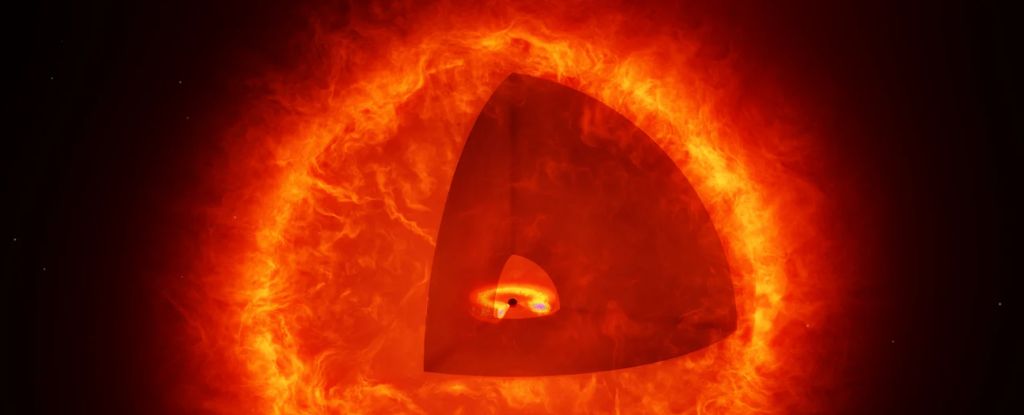
Astronomers may have identified a new class of astronomical objects that could reshape our understanding of the early Universe. A recent study led by Anna de Graaff from the Max Planck Institute for Astronomy proposes that certain mysterious light sources, particularly one nicknamed The Cliff, might be supermassive black holes enveloped in dense gas clouds. This hypothesis could provide a solution to a longstanding conundrum regarding the apparent age of galaxies in the early Universe.
The analysis of The Cliff reveals a pronounced feature in its spectrum known as the Balmer break. This phenomenon signifies a sharp change in light intensity across different wavelengths, typically associated with galaxies hosting significant populations of A-type stars. However, according to the researchers, the characteristics of The Cliff’s light suggest it may not originate from a traditional stellar population. Instead, they propose that it arises from a luminous ionizing source influenced by dense, absorbing gas in its vicinity.
“We conclude that the rest-optical and near-infrared continuum of The Cliff cannot originate from a massive, evolved stellar population with an extremely high stellar density,” de Graaff explained in their study. This insight challenges previous models and opens new avenues for understanding the dynamics of early galaxies.
The Balmer break is particularly significant when considering the timeline of the Universe. Many of the light sources classified as “little red dots” (LRDs) began exhibiting this feature approximately 600 million years after the Big Bang, which occurred about 13.8 billion years ago. The existence of such a strong Balmer break during this early period suggests that galaxies would have needed to reach a level of evolution that they likely had not attained yet.
Researchers have explored various possibilities for these LRDs, including primordial black holes and the seeds of supermassive stars. The Cliff, however, represents a unique challenge. Its light has traveled for 11.9 billion years, making it the most distant source exhibiting a strong Balmer break.
In their investigation, the scientists noted that the spectrum of The Cliff resembles that of an individual star rather than an entire galaxy. This led to the formulation of a new model termed the “black hole star.” In this model, a supermassive black hole at the center actively consumes material from an accretion disk, surrounded by a thick envelope of hydrogen gas. This structure mirrors the characteristics of a star but is fundamentally different, as it lacks the nuclear fusion processes found in typical stars.
The team’s simulations of the black hole star model closely matched the observed spectrum of The Cliff, lending credence to the idea that some LRDs in the early Universe could actually be these extraordinary black holes masquerading as galaxies. While the hypothesis remains theoretical at this stage, it offers a potential explanation for the peculiarities surrounding these cosmic entities.
Further research is essential to validate the existence of black hole stars and understand their formation and evolution. Additionally, scientists seek to uncover what other spectral features could be indicative of such objects.
The Cliff provides a significant opportunity to expand our knowledge of active galactic nuclei and black hole stars. The researchers stated,
“The Cliff presents the strongest direct evidence to date that the Balmer break and rest optical to near-infrared spectral energy distribution in LRDs can be dominated by emission from an active galactic nucleus, rather than evolved stellar populations.”
The findings from this study are published in the journal Astronomy & Astrophysics. As astronomers continue to explore these enigmatic light sources, they hope to refine their understanding of the Universe’s early history and the objects that populated it.







